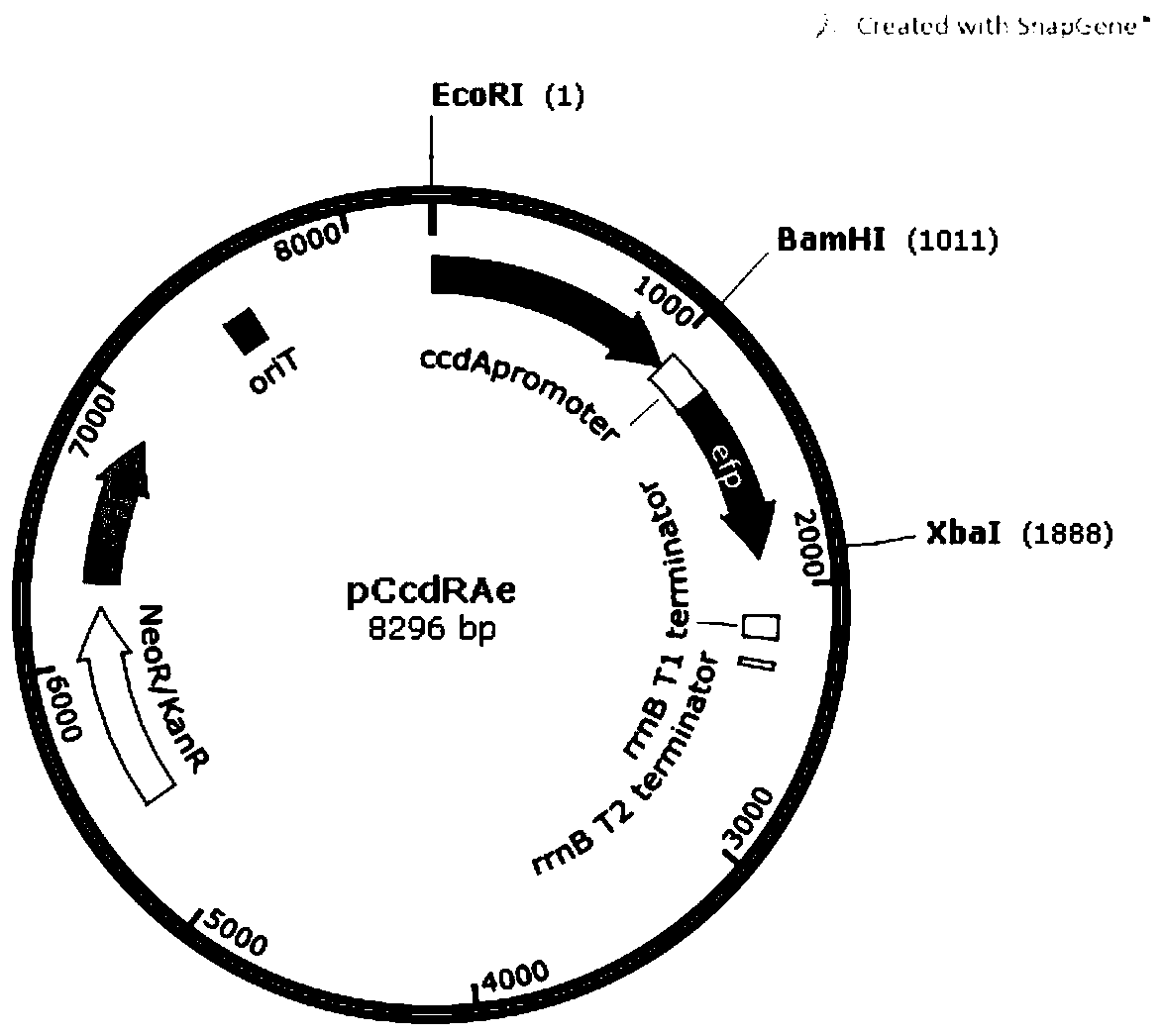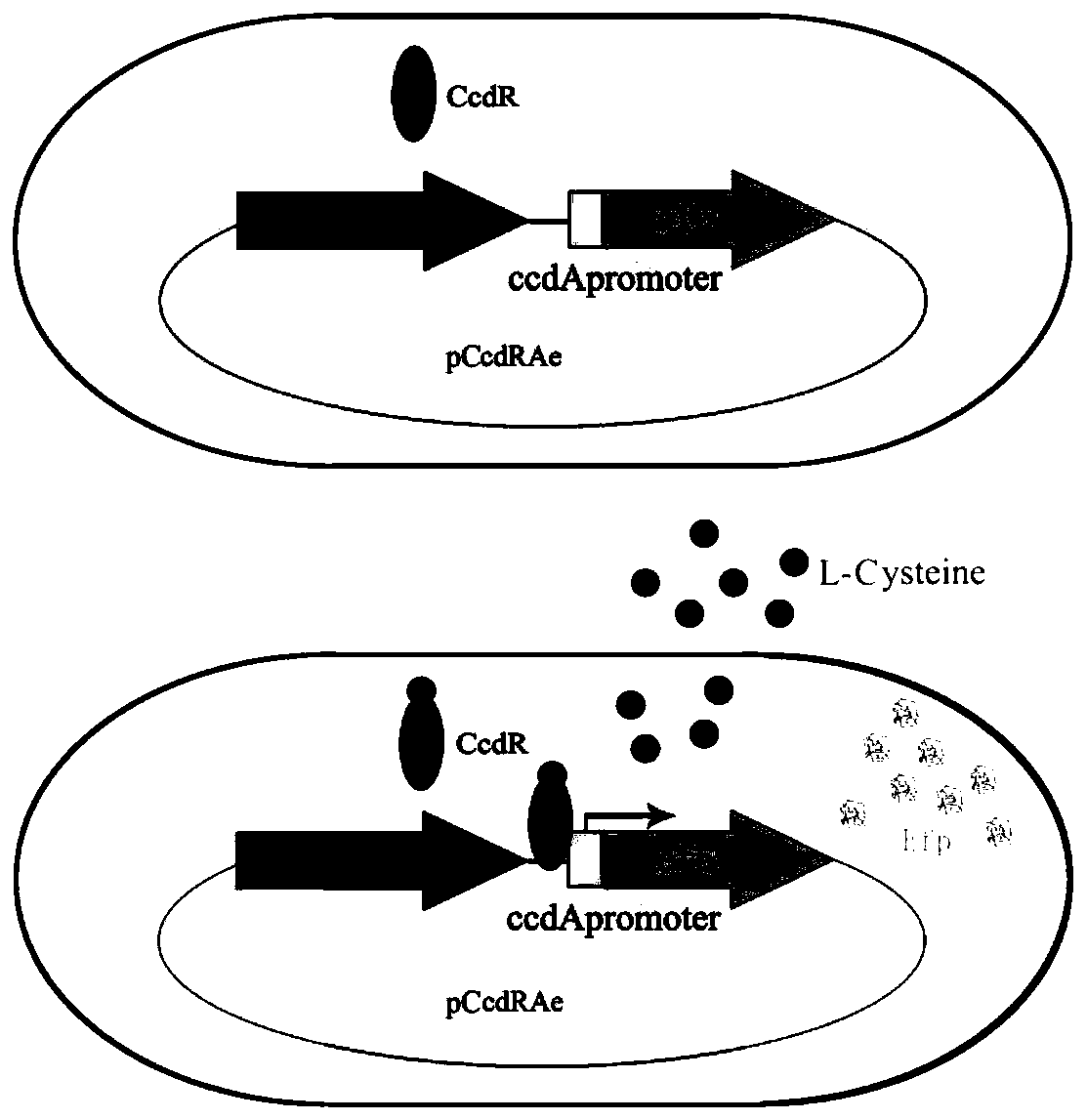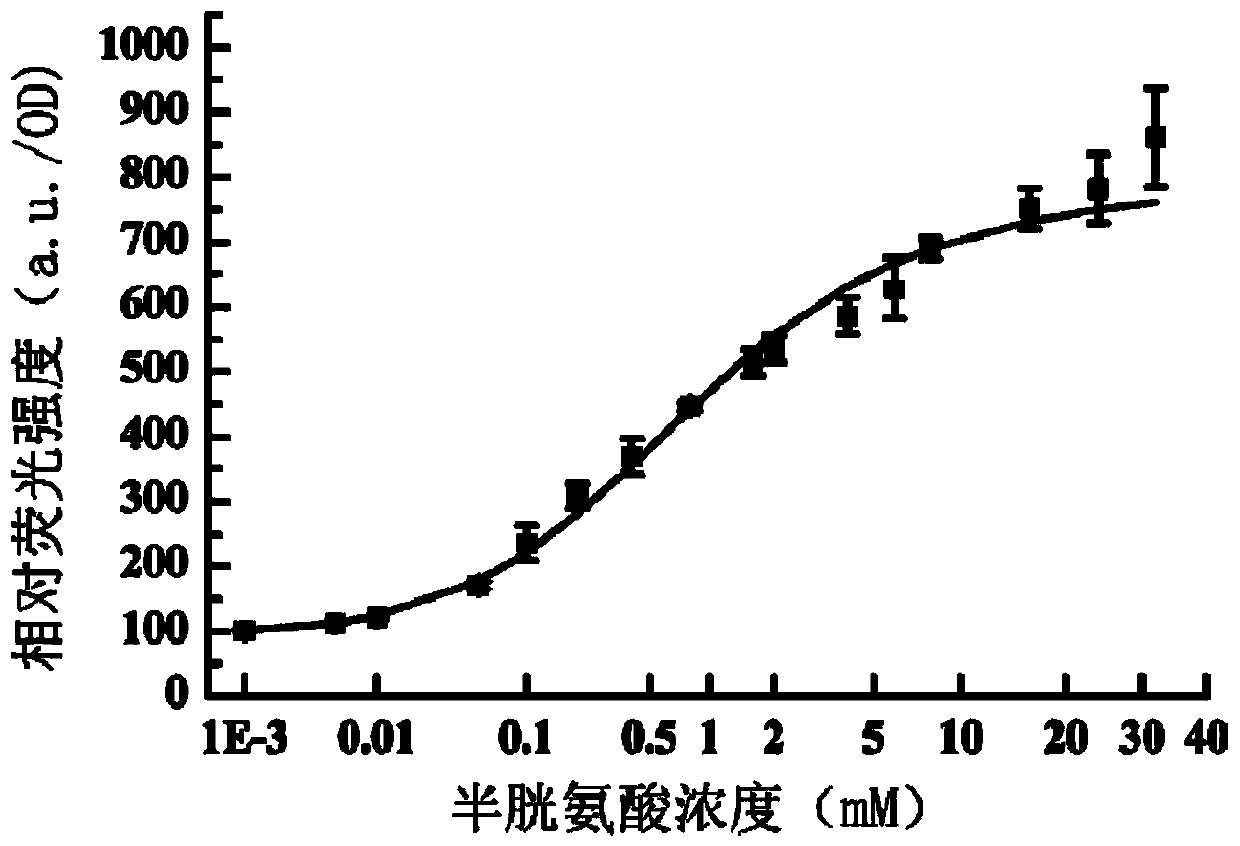Construction and application of cysteine single-cell biosensor
A biosensor, cysteine technology, applied in microorganism-based methods, microbial determination/inspection, microorganisms, etc., can solve the problem of lack of rapid, sensitive and highly specific detection, achieve real-time detection, enhance downstream genes Expression, strong specificity
- Summary
- Abstract
- Description
- Claims
- Application Information
AI Technical Summary
Problems solved by technology
Method used
Image
Examples
Embodiment 1
[0030] Example 1 Construction of L-cysteine biosensor expression plasmid
[0031] In this example, PCR amplification is performed on each component module of the L-cysteine biosensor to obtain the nucleotide fragments that make up the module, and each module is assembled in a certain order by molecular cloning technology to complete the L-cysteine biosensor. Construction of biosensor expression plasmid pCcdRAe
[0032] The PCR method was used to amplify the structural gene of ccdR and its upstream and downstream nucleotide fragments using the Pantoea ananatis AJ13355 gene as a template. This process used primers ccdR for and ccdR re. Also use primers ccdA-efor and ccdA-e re to amplify the ccdA promoter fragment, and use primers ccd-efp for and ccd-efp re to amplify the eGFP gene fragment. Then, using primers ccdA-e for and ccd-efp re, the promoter nucleotide fragment of ccdA and the eGFP gene fragment were fused by fusion PCR. ccdR and its upstream and downstream nucle...
Embodiment 2
[0040] Example 2 Detection of L-cysteine by L-cysteine single-cell biosensor
[0041] In this example, the sensitivity and specificity of the biosensor to L-cysteine were tested.
[0042] (1) A single colony of DH5α carrying the single-cell biosensor plasmid pCcdRAe was inoculated into a medium of LB+25 μg / L kanamycin, and cultured overnight at 37° C. at 200 rpm for 12 hours.
[0043] (2) Inoculate the overnight cultured bacterial solution into fresh LB+25 μg / L kanamycin medium at a ratio of 1:50, and culture overnight at 37° C. at 200 rpm for 12 hours.
[0044] (3) When the cell OD 600 When it reaches 0.5-0.8, add L-cysteine with a final concentration of 0-32mmoL / L, and measure the fluorescence intensity after 2 hours.
[0045] (4) When measuring the fluorescence intensity, first centrifuge the bacteria, remove the supernatant, then wash the bacteria with PBS buffer and resuspend to make the resuspension OD 600 is about 0.5. A Hitachi fluorescence spectrophotometer ...
Embodiment 3
[0048] Example 3 Application of L-cysteine single-cell biosensor in screening strains with high L-cysteine production
[0049] In this example, the L-cysteine single-cell biosensor is used in combination with a high-throughput screening system to screen for high-yield L-cysteine strains ( Figure 5 ).
[0050] (1) Escherichia coli DH5α containing plasmid pCcdRAe was used as a starting strain for mutagenesis. The strain to be mutated was cultivated overnight at 37° C. and 200 rpm in a liquid medium of LB+25 μg / mL kanamycin. After washing with normal saline, the cells were resuspended and the OD 600 Adjust to 1.0, take 10 μL of bacterial solution for mutagenesis. For mutagenesis, ARTP was used to irradiate for 12-20s, and the cells after mutagenesis were cultured overnight in LB+25μg / L kanamycin liquid medium at 37°C and 200rpm;
[0051] (2) The cells cultured overnight were initially screened with a Beckman MoFlo XDP flow cytometer, and the cells with the fluorescen...
PUM
 Login to View More
Login to View More Abstract
Description
Claims
Application Information
 Login to View More
Login to View More - R&D
- Intellectual Property
- Life Sciences
- Materials
- Tech Scout
- Unparalleled Data Quality
- Higher Quality Content
- 60% Fewer Hallucinations
Browse by: Latest US Patents, China's latest patents, Technical Efficacy Thesaurus, Application Domain, Technology Topic, Popular Technical Reports.
© 2025 PatSnap. All rights reserved.Legal|Privacy policy|Modern Slavery Act Transparency Statement|Sitemap|About US| Contact US: help@patsnap.com



